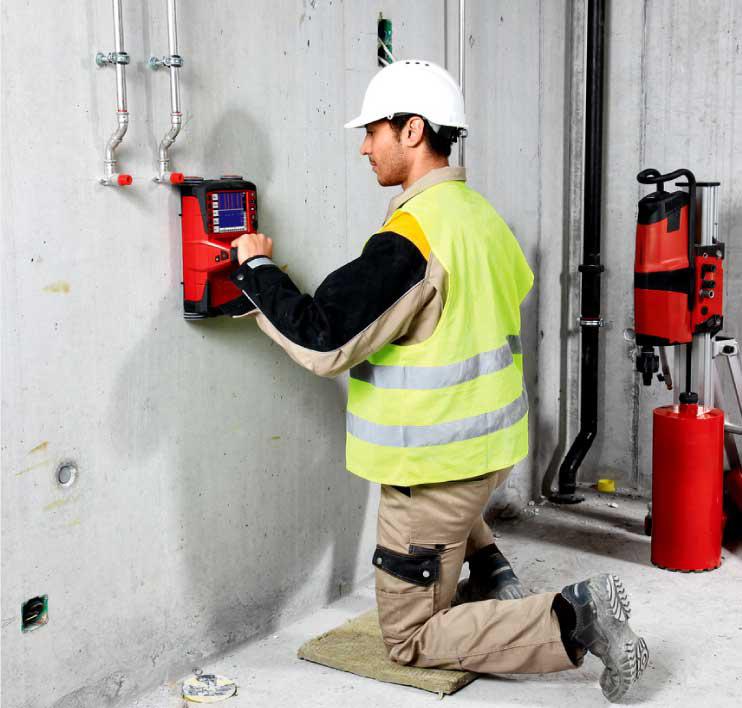Grasping RainierGPR Concrete Scanning: Necessary Idea
Discovering the Depths: A Comprehensive Overview to Concrete Scanning and Its Diverse Applications
In the realm of building and construction and framework development, the meticulous process of concrete scanning holds a critical function in making sure the architectural honesty and safety and security of projects. As modern technology continues to advance, the applications of concrete scanning have increased far past mere surface-level assessments.
Importance of Concrete Scanning
Comprehending the relevance of concrete scanning is critical in making certain the safety and security and honesty of frameworks during construction and improvement projects. Concrete scanning uses innovative innovations such as ground-penetrating radar (GPR) and electro-magnetic induction to discover embedded things, spaces, or other abnormalities within concrete frameworks - RainierGPR Concrete Scanning. By conducting detailed scans prior to boring, cutting, or coring right into concrete, building groups can prevent unintended damages to crucial structural components like rebar, conduits, or post-tension cable televisions. This positive method not only avoids costly repair work and job delays but also improves general building and construction safety by alleviating the danger of structural failings or collapses because of compromised honesty.
Moreover, concrete scanning plays a crucial function in ensuring conformity with building codes and guidelines that mandate the protection of existing structural parts during construction activities. By properly mapping out the interior structure of concrete, scanning technologies make it possible for building and construction specialists to make informed decisions that support the architectural stability and resilience of structures and facilities tasks. Basically, the value of concrete scanning exists in its ability to guard both the architectural stability and the workers associated with building and construction endeavors.
Technologies Made Use Of in Concrete Scanning
Concrete scanning depends on sophisticated technologies such as ground-penetrating radar (GPR) and electromagnetic induction to properly spot embedded items and abnormalities within concrete frameworks. Ground-penetrating radar runs by releasing high-frequency electro-magnetic waves into the concrete. When these waves experience various products or voids within the concrete, they get better to the surface area, permitting the GPR system to create an in-depth subsurface photo. This modern technology is specifically efficient in finding rebar, post-tension cables, conduits, and various other items embedded in concrete.
Electromagnetic induction, on the various other hand, works by creating magnetic fields around a concrete structure through a transmitter coil. When steel things exist within the concrete, they interrupt these electromagnetic fields, causing eddy currents to flow through the steel. By gauging the adjustments in the magnetic fields with a receiver coil, the system can determine the location of metallic objects in the concrete.
These innovative modern technologies play an important duty in non-destructive screening, making certain the security and honesty of concrete structures in various industries.
Applications in Construction Sector
Within the building industry, concrete scanning innovation discovers diverse applications that improve task effectiveness and safety and security. Furthermore, concrete scanning is made use of for finding spaces, such as air pockets or locations of damage within concrete, which can endanger the general stamina of a structure. Concrete scanning plays a critical duty in top quality control by validating the density of concrete covers over reinforcement, guaranteeing compliance with design requirements and requirements.

Safety And Security Benefits of Concrete Scanning
In the world of construction safety and security, the application of concrete scanning modern technology presents a vital advantage in preemptively determining possible threats and fortifying structural stability. By using sophisticated scanning techniques such as ground-penetrating radar (GPR) and electro-magnetic induction, building groups can accurately find rebar, post-tension cables, avenues, and other covert items within concrete structures. This proactive method substantially decreases the threat of look at this site unintentional strikes throughout exploration, cutting, or coring tasks, thus stopping pricey problems, injuries, and task hold-ups.
Additionally, concrete scanning improves worker safety by providing real-time details regarding the structural problem of concrete elements. By addressing possible security concerns promptly, concrete scanning adds to developing a safe functioning environment and minimizing the probability of structural failings or crashes on building websites.
Future Patterns in Concrete Scanning
Emerging improvements in scanning innovation are poised to change the field of concrete examination and analysis. By using the power of AI, these systems can assess huge amounts of data collected during scanning processes to offer more in-depth and precise understandings right into the condition of concrete frameworks.
Another substantial pattern is the development of even more user-friendly and mobile scanning tools. Miniaturization of scanning tools enables easier accessibility to confined spaces and remote places, making examinations extra anchor thorough and reliable. Additionally, improvements in wireless communication innovations make it possible for real-time data transfer and analysis, assisting in quicker decision-making procedures.
In addition, there is a growing focus on sustainability in concrete scanning innovations - RainierGPR Concrete Scanning. Suppliers are increasingly incorporating environment-friendly products and energy-efficient functions into their gadgets to reduce environmental impact. These future trends are set to boost the performance, precision, and sustainability of concrete scanning techniques, forming the market's future landscape
Final Thought
In final thought, concrete scanning plays a critical function in the building and construction sector by making sure the security and efficiency of different tasks. As technology developments, the future of concrete scanning holds visit this web-site encouraging developments for boosting building and construction processes.
